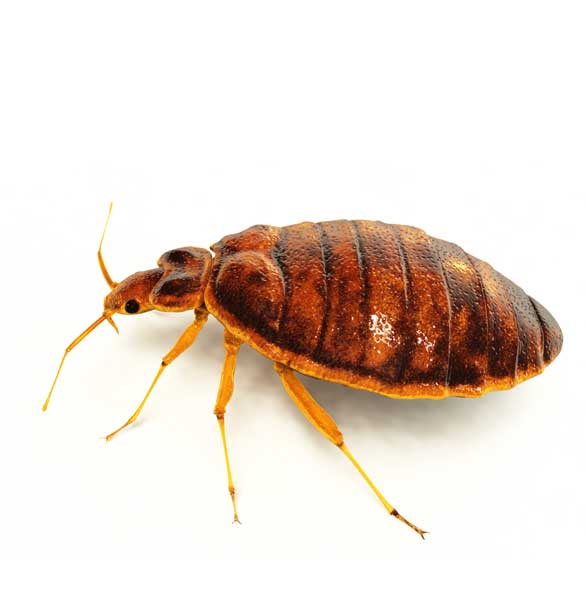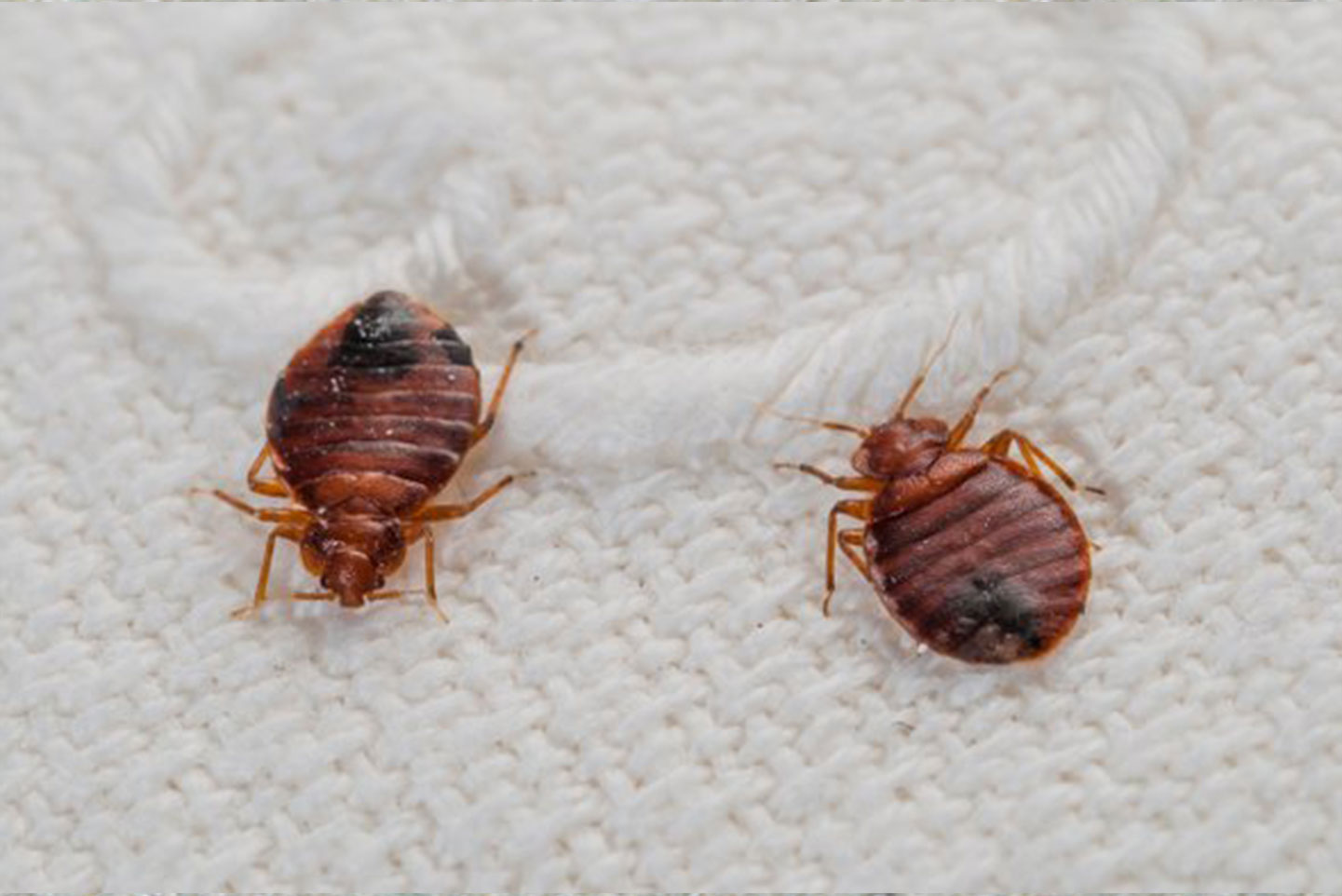(Cimex lectularius)
Description
Bed bugs are small, flat insects. They are wingless and reddish-brown in color. They range in size from 1mm to 7mm. They are oval-shaped and the size of an apple seed. However, after feeding, their bodies become longer and more rounded. They have piercing-sucking mouthparts, as they are parasitic creatures that suck blood.

Additional Information
Habits & Behavior
Bed bugs are known for hiding out in beds during the day and feeding on humans while they sleep. These insects have been associated with humans for more than 3,300 years. Because humans are their hosts, they are pretty much found everywhere people tend to gather, including homes, apartments, hotels, schools, offices, retail stores, and even buses and other forms of public transportation.
Bed bugs cannot fly but they can run quickly. They are great hitchhikers, allowing them to travel long distances by latching on to various items. Bed bugs are known to hitch rides on suitcases, clothes, linens, and other personal items.
Bed bugs are also good hiders. They can hide in almost any crevice. They are known for hiding in and around the bed, such as along seams in the mattress or box springs, in the cushions of upholstered furniture, around the headboard, bed frame, and box springs. They can also be found along the floor, walls, baseboards, and windows, and behind objects hanging on the wall.
Food
Most creatures have a varied diet, but bed bugs can only survive on one type of food: blood. Because of their mouthparts, they cannot do anything else but suck blood. They cannot chew wood or paper nor can they eat human skin, hair, or clothing.
Bed bugs are known to travel many feet to reach their human host. Bed bugs are attracted to carbon dioxide and body heat.
While bed bugs need regular blood meals to survive, humans are not their only targets. Bed bugs will suck the blood of other animals as well, such as bats, birds, and other poultry. Bed bugs do not feed on a predictable schedule. They feed only when they need a blood meal and there is an available host nearby. This is, on average, every 5-7 days. However, depending on environmental conditions, bed bugs can go without feeding for as long as 400 days.
Reproduction
The life cycle of the ant encompasses four stages: egg, larva, pupa, and adult. This life cycle spans approximately 8-10 weeks. The queen spends her life laying eggs. The workers are females and do the work of the colony, with larger individuals functioning as soldiers who defend the colony. At certain times of the year, many species produce winged males and queens that fly into the air and mate. After mating with queens, the males will die.
The eggs are extremely small and can vary in shape, but tend to be oval and transparent. Ants lay fertilized and unfertilized eggs. Interestingly, unfertilized eggs hatch out males, while fertilized eggs become females. The eggs can take 7-14 days to hatch.
Upon hatching, the ant is a soft, legless larva. The larvae later turns into a pupa, which resembles the adult. However, it is soft and white, and does not move. It then takes 6-8 weeks longer for the egg to develop into an adult.
Signs
Besides seeing actual live bed bugs, here are some other signs that you may have these nasty critters in your home:
Bites on your skin, which are often similar to mosquito bites and may look like raised, red bumps in a line, zigzag, or random pattern.
- Blood spots on your sheets or mattress
- Bed bug eggs, which are tiny and pale in color (white or yellow)
- Bedbug poop, which looks like a black dot the size of a period
- Blood stains from smashed bed bugs
- The bedbugs’ shed skin, which looks a lot like actual bedbugs
- A musty odor around your bed
- Bites on your skin, which are often similar to mosquito bites and may look like raised, red bumps in a line, zigzag, or random pattern.
Dangers
Bed bugs are not considered to be dangerous to humans. They do not spread diseases or cause contamination to food.
The biggest danger is their bites. A bed bug bite can be itchy and uncomfortable. They can be so painful that you might scratch too much and break the skin. This can cause an infection, which can be serious if not treated.
Also, some people are allergic to bed bug bites. An allergic reaction could cause blisters or hives. In these cases, you may need to see a doctor for treatment.
Bed bugs can be a mental health concern for many people. If you have bed bugs in your home and have been bitten before, you may have anxiety about the situation. Some people even develop insomnia, as they are too scared to sleep for fear of being bitten.
Contact Us Today
Bed bugs are annoying creatures that are extremely difficult to eradicate. Don’t try to handle this task on your own. Get help from the team at Stride Pest Control.
You don’t have to suffer much longer. We’ll help you sleep soundly and live the pest-free life you deserve. Request a quote or schedule a free consultation by filling out the online form or calling (512) 777-1339 (Austin) or (210) 547-8410 (San Antonio).
complaints of Bedbugs happen during the summer
50%
Reported BedBug Sighting in single family homes
90%
U.S. States with BedBug Infestations
50%
Farenheit Temperatures a BedBug can survive in
33-120°
Get a FREE Consultation


